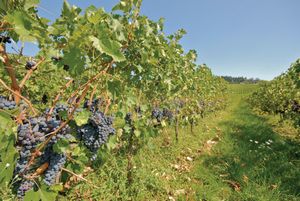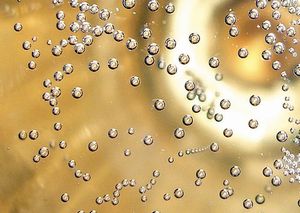The next time you walk past that white bulb with the green fronds at your grocer’s, stop and appreciate that it is one of nature’s marvels. It is both an herb and a vegetable. Almost all of the plant is edible: seeds, foliage, stalk and – with the variety known as Florence Fennel – the bulb. It grows easily and needs little cultivation. Best of all, it is available almost year round.
Fennel has one of the richest histories of any food. The Greeks called it marathon, after the battlefield where they defeated the Persians. We think of Greek athletes being crowned with laurel, but they also used fennel fronds in wreaths. In fact, fennel was their symbol for both victory and success, as it became for the Romans. According to Greek mythology, Prometheus, who brought fire to mankind, hid the fire he had stolen from the gods in the hollow stalk of a fennel plant.
The Roman historian Pliny probably started one of the oldest superstitions in medical history. He wrote that eagles became blind after moulting and ate fennel seeds to regain their sight. Suggesting that humans try this as well, he set off a tradition that continued some 1500 years. Even Shakespeare mentions fennel, saying whoever ate it would have clearer sight.
In the 9th century, Holy Roman Emperor Charlemagne issued an edict that it be grown in the south of France. Sources show that fennel was eaten in the Middle Ages during Lent to ease hunger pangs. We also know that English Puritans chewed fennel seeds during their long church services, as a breath freshener.
Some hold that a bite of raw fennel can improve the taste of bad wine. In 1614, Giacomo Castelvetro wrote about the ‘villainous’ Venetian wine sellers who offered their innocent (or simple-minded) customers a nice piece of fennel to eat with their wine, instead of tasting it on an empty stomach.
In 1824, Thomas Appleton, the American consul in Florence, sent seeds to Thomas Jefferson with a glowing report. He even said, ‘I preferred it to every other vegetable, or to any fruit.’ Sadly, it does not appear Jefferson was any more successful with the fennel seeds than he was with the carnaroli rice he took back with him.

Today fennel finds commercial uses in perfume, toothpaste, soap and air fresheners. In natural health circles, it is recommended for indigestion, flatulence or colic. And nursing mothers are encouraged to eat fennel, as it is said to increase the production of milk. Its seeds are used to spice, especially cooked fish. They can also be used in bread, cakes and vegetable soups. The fronds, finely chopped, make an excellent seasoning or garnish for fish. But, in the market, we usually see just the bulb.
Fennel bulb can be eaten raw with a little salt as an appetizer, just as you might eat celery. In fact, it can be substituted for celery in almost every recipe. It can also appear raw in a salad, thinly sliced and dressed with some lemon juice and olive oil. A Sicilian variation adds orange sections, endive and ripe olives.
As a first course, serve wedges of fennel sprinkled with crumbles of Parmesan cheese. Or make a bed of paper-thin slices, then top with prosciutto or smoked salmon. A bit of freshly ground pepper plus some fennel seeds, and you have a healthy, fresh and oh so easy dish.
In Italy there is a long tradition of serving sliced fennel at the end of a meal, perhaps with some sliced apples or oranges, as it is thought to relieve digestive problems.
Many think of fennel as primarily a Summer vegetable, because it is almost always included in a Pinzimonio, that wonderful starter featuring lots of sliced raw vegetables with a dipping sauce of olive oil, salt and freshly ground pepper. But Gastronomy of Italy tells us that it is ‘the most commonly prepared winter vegetable.’ Fennel soups, risotto with fennel and shrimp, braised fennelthe list goes on and on.
When ready to select fennel, plan on about one medium sized bulb per person. The bulb should be firm to the touch and the outer layers crisp and white, not shrivelled or yellow. If the outer layer seems stringy, peel it with a sharp knife. Serve it early in the meal or late, raw or cooked, and just enjoy!
Braised Finocchio with Olive Oil
Adapted from Essentials of Classic Italian Cooking
Serves 4
3 large or 4-5 medium
fennel bulbs
80 ml extra virgin olive oil
Salt
Cut the fronds and stems off the bulb. Detach and discard any of the outer leaves that are bruised or discolored. Slice off the hard bottom of the bulb (or core if preferred). Cut the bulb vertically into thin slices. Wash the slices in several changes of cold water.
Put the fennel slices and olive oil in a large saucepan, add just enough water to cover, and turn on the heat to medium. Do not put a lid on the pot. Cook, turning the slices over from time to time, until they become a glossy pale gold and feel tender when prodded with a fork. Any butt end remaining will be firmer than the upper part of the slice. Depending on the freshness of the fennel, this process should take 25 to 40 minutes. If there is too little liquid while cooking, add a little hot water. By the time the fennel is done, all the water should be absorbed. Add salt, toss the slices, then transfer to a warm platter and serve at once.








